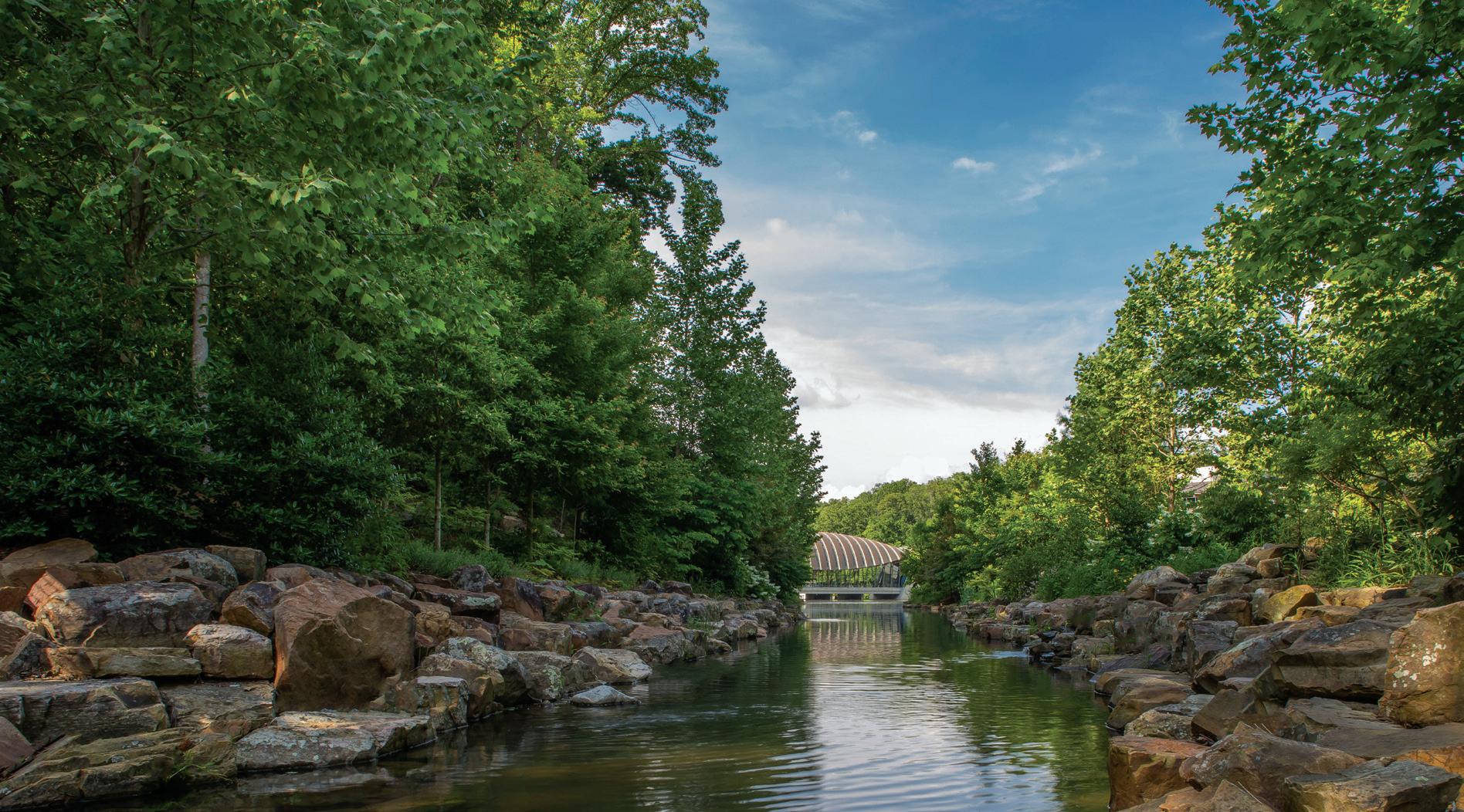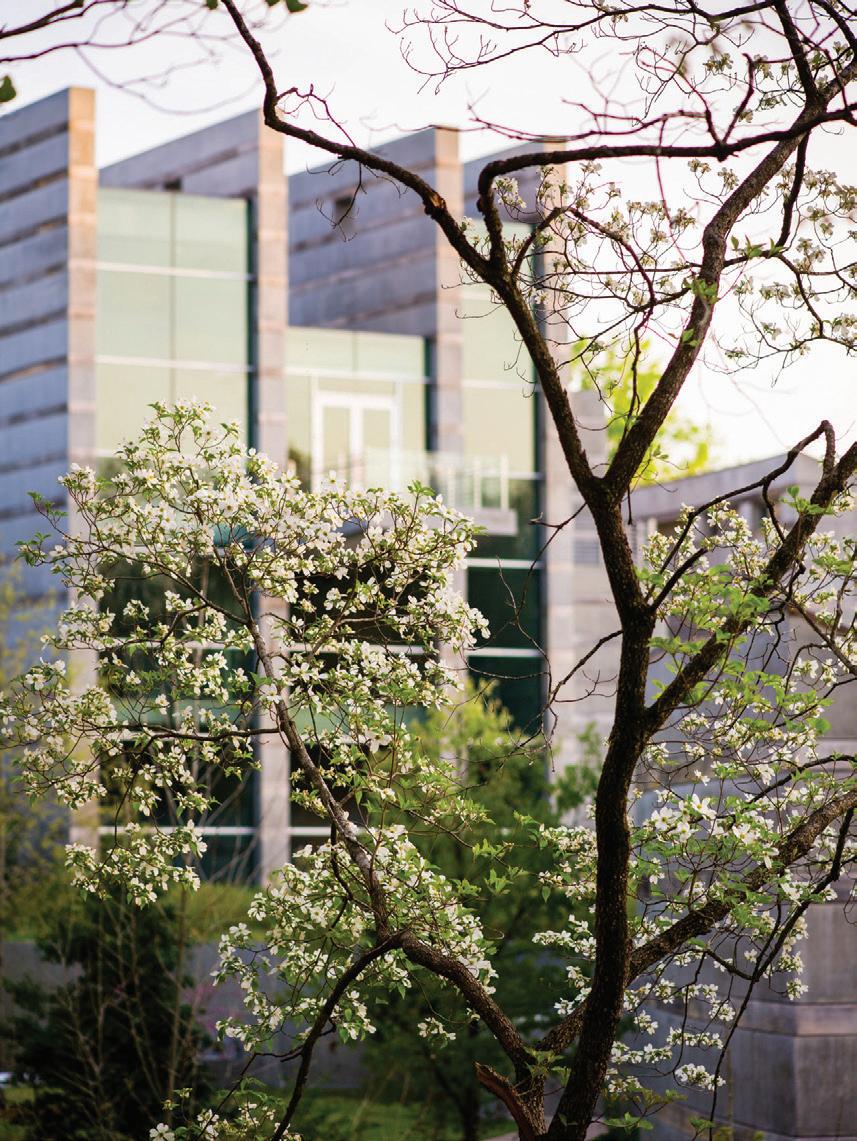
3 minute read
Take a Walk on the Museum’s Grounds
Have you taken a walk or bike ride through the Crystal Bridges grounds? The trails and grounds of the museum are a must-see part of the museum experience. More than five miles of trails wind through the museum’s 120-acre site, providing access to the beautiful Ozark landscape. Here, we offer some quick facts and thoughts from Director of Trails and Grounds Clay Bakker to help you enjoy your next visit to the museum’s grounds.
Did You Know
32 sculptures are installed on the grounds around Crystal Bridges. Have you been able to find all of them?
You can walk to downtown Bentonville headed south via the Art Trail, and onto the Crystal Bridges Trail/Razorback Greenway. Keep walking from there, and you’ll eventually hit the Momentary at E St.!
The Crystal Spring Trail, accessible from the museum’s South Lawn, takes visitors to the natural spring from which the museum derives its name. The spring produces 100 to 125 gallons of fresh water per minute, at a chill 52 degrees year-round. The Rock Ledge Trail, north of the museum, takes its name from the rock bluffs once carved into the hills to make way for a nineteenth-century railroad that was never completed.
Discover the mountain bike trails that weave through the museum’s grounds, including the newly built Ravine Trail and the All-American Trail.
We offer several nature programs to learn more about the flora and fauna of the area, such as Discover the Grounds, which are led by local nature experts. Check the calendar on our website to book a spot at the next event.

Q&A with Clay Bakker
What kinds of wildlife live at Crystal Bridges? Clay Bakker: Our 120 acres are very typical of what you’ll find in the middle of the Ozarks. We have a plethora of insects, birds, reptiles, and mammals, such as fox, possum, deer, coyote, squirrels, the list goes on. We estimate we have anywhere from 6 to 20 new deer born on our property every spring. Can you tell us a little about the blooming season on the grounds? CB: The first blooms you’ll see in the spring start with the serviceberry trees. They are an understory tree about the same size as dogwoods and redbuds, but it creates a puffy, white bloom that becomes an edible berry, which looks like a blueberry. The serviceberry trees bloom around the end of March.
Shortly after that, you’ll begin to see ephemeral plants on the forest floor, such as jack-in-the-pulpit and trillium. They come out before the rest of the forest has greened up so these early plants can get the sunlight they need, and as soon as they flower, they die for the rest of the year because the canopy closes all the sunlight off the forest floor.
Then, we move on to the redbuds—they usually come out at the end of March/beginning of April. The blooming process takes a couple of weeks. Next is the dogwoods. It’s a little different every year—last year, April 20, 2019 was a full bloom, so it varies.
Do you have a favorite plant or flower that grows on the grounds and why? CB: That’s like asking me, “which of your children is your favorite,” but if I had to pick, my favorite plant is the Oakleaf Hydrangea, and, this is not necessarily a coincidence, we have the Alice variety of this hydrangea all around our grounds. It’s a pretty big bush—it gets anywhere from six to eight feet high and wide—and it has huge panicles of flowers. It blooms in June and it can bloom for up to a month. Then in the fall, the foliage turns a variety of colors from orange to red, which is just spectacular. It’s a super hearty, super successful plant here on the grounds.












